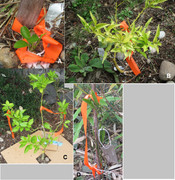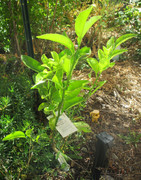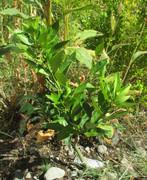101
Cold Hardy Citrus / Re: new thoughts on breeding hardier citrus
« on: November 11, 2021, 12:20:13 AM »Woodlanders ichang papeda is seed-grown, would be a gamble but I guess that's a way.If the Ichang papeda crossed with something else, I think it would be obvious from the leaves and fruits that it was not Ichang papeda. Ichang papeda has very symmetrically sized leaves when it comes to the winged petioles.
I believe Ichang papeda is very zygotic (seeds resulting from sexual recombination), but assuming the plant crossed with itself, I would expect it to come out mostly true to seed.
Of course my personal experience of Ichang papeda plants not seeming to be very cold tolerant might counter that theory.
If this species was as cold tolerant as everyone else seems to observe, then I think it would have a lot of potential for breeding, judging by the quality of what I've tasted from the fruits. Especially anyone specifically trying to breed something with more of a lemon or lime flavor rather than "orange" flavor. Ichang papeda only takes one cross with something else to get something edible. Poncirus trifoliata, on the other hand, takes two or three. I'm going to say Ichang papeda is probably on about the same level of edibility as a Thomasville citrangequat, the best poncirus hybrid I've tasted. Just my personal opinion. (I'd imagine many would say the Thomasville citrangequat is a little bit better)
It's extremely rare for poncirus to cross just one time and result in something that is possible for anyone to eat. US-852 citrandarin and Dunstan citrumelo might be the best two. Still some bad poncirus flavor but some people can manage to eat them without too much problem. (I personally have not had an opportunity to taste either yet, but am going by the reports of others)










